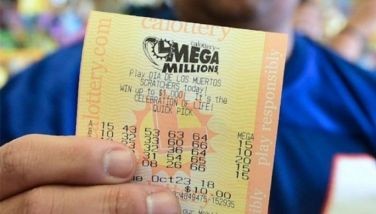
Didn’t you ever wonder who reaps in the bucks of your favorite brand? Years ago, it was so easy. The designer, whose name was in the label, was usually the owner. Maybe there was a partner or family members involved. Now, fashion companies have opened to the stock market and luxury conglomerates have started to control these independent, family-owned brands, which has changed ownership dramatically. Companies have started a shopping spree, grabbing up labels left and right. They are giving a new lifeline to old companies with injections of cash and hot designer talent. Just look at Gucci when Tom Ford entered the picture, or Marc Jacobs for Louis Vuitton, Michael Kors for Celine, John Galliano for Christian Dior, Stella McCartney for Chloé, Martin Margiela for Hermès and most recently, Nicolas Ghesquière for Balenciaga. In an article,
Power and the Fashion, July 12, 2001 of the
South China Morning Post, Patty Huntington wrote that according to the luxury goods specialist analyst Morgan Stanley Dean Writter, the luxury market is due to grow from US$60 billion to US$150 billion over the next four years. So, here’s the answer to your question: Who owns my favorite brand?
Perhaps the biggest super group of them all is LVMH Moët Hennessy Louis Vuitton SA. Synonymous to luxury, LVMH owns perfumes (Christian Dior, Guerlain, and Givenchy); cosmetics (Bliss, Hard Candy, Fresh Urban Decay and BeneFit); fashion and leather goods (Christian Lacroix, Givenchy, Kenzo, Marc Jacobs, Celine, Loewe, Pucci, Joseph, Thomas Pink, Christian Dior, Louis Vuitton and stakes in Fendi and Michael Kors); and watches and jewelry (Tag Heuer, Ebel, Chaumet, and Fred Joaillier). LVMH’s retail division includes 61% of DFS Group (duty-free travel stores), Sephora cosmetics stores, and the Synchrony watch and Solstice sunglasses shops. It’s also a sip of the good life with champagnes and wines (Dom Pérignon, Krug, Moët & Chandon, and Veuve Clicquot); cognacs (Hennessy and Hine).
French businessman Bernard Arnault is credited for these aggressive buyouts.
Forbes’ 2001 World’s Richest People List pegs his personal net worth at US$ at $10.7 billion, making him the richest fashion mogul. Chairman Bernard Arnault and his family own 48% of LVMH. Arnault prefers to acquire an existing brand and hire young and hip designers to change the image of the label. Funny enough, he hires non-French designers to head these fashion houses like in Christian Dior, he fired Marc Bohan and hired Italian Gianfranco Ferre, then fired Ferre and hired John Galliano from in-house, Givenchy. Alexander McQueen was hired to take Galliano’s place in Givenchy. He showed his last collection this spring and was abruptly replaced by Brit, Julien Macdonald. Other movers and shakers are Marc Jacobs for Louis Vuitton, Michael Kors for Celine, Narciso Rodriquez (outgoing creative director) for Loewe, Hedi Slimane for Christian Dior Menswear and Julio Espada for Pucci. His only fashion start-up was Christian Lacroix, which proved unprofitable.
This year, Donna Karan will be combined with LVMH unit Gabrielle Studio, the licensor of Donna Karan’s trademark. Donna Karan will continue to act as chief designer in the new company.
Compagnie FinanciEre Richemont is the second largest luxury goods group. Through luxury goods subsidiary Vendôme Luxury Group, it markets Cartier jewelry, Piaget and Baume & Mercier watches, Alfred Dunhill leather goods, and Montblanc pens. Cartier is reported to make 70 percent of Richemont’s profits. The company also owns jeweler Van Cleef & Arpels, Lancel, Hacket Sulka, Old England, Seeger, Shanghai Tang, Chloé, luxury gunmaker, Purdey and controls 49% of US catalog marketer Hanover Direct. Richemont also ticks with Piaget, Vaucheron Constantine, Officine Panerai, IWC, Jaeger-Le-Coultre and Lang & Söhne. Recently, they let Stella McCartney get away — she is credited with having quadrupled sales of Chloé after becoming its chief designer in 1997. Her assistant Phoebe Philo will take the reins of the house. McCartney was lured to join the Gucci group and will soon launch her own line.
The Rupert family controls Richemont. Would you believe they let Gucci get away in 1994 for US$350-400M?
Gucci president Domenico De Sole and Tom Ford have pulled off one of the greatest comebacks in the fashion world with Gucci. With the help of billionaire Francois Pinault, head of the Pinault-Printemps-Ridoute (PPR) French retail conglomerate, which owns everything from Christie’s auction house to Printemps department stores and Chateau Latour Bordeaux, they were able to ward off LVMH’s attempt to take over Gucci. He bought 42% of the company and handed US$3 billion to De Sole and Ford. He also gave them Yves Saint Laurent after buying YSL parent company Sanofi Beauté for US$1 billion. Since then, they have been on a buying streak from Sergio Rossi, to Botega Venetta and Balenciaga. Other Gucci Group brands are Boucheron, luxury watch marques BEDAT & Co and Di Modolo, Roger & Gallet and the beauty arms of Van Cleef & Arpels, Oscar de la Renta, Krizia and Fendi. Lately, they have preferred start-ups, signing up Alexander McQueen and Stella McCartney to do their own labels.
I Pellettieri d’Italia (aka Prada) is making its move. The fashion house has aspirations of being a top luxe player like leader LVMH. Born from the marriage of Miuccia Prada and Patrizio Bertelli and their leather goods and manufacturing businesses, respectively. Prada sells apparel, shoes, and accessories for men and women, as well as its less-pricey Miu Miu apparel line. Decades after Prada’s launch in 1913, it has become a powerhouse making sales of US$1.42 billion in 2000. The company operates about 400 stores worldwide, including stores for Prada and other recently acquired brands from UK shoemaker Church & Co. to Italian shoemaker Carshoe, De Rigo eyewear, Helmut Lang, Jil Sander, and Fendi (51%, in a joint venture with LVMH). The family-owned company plans a public offering in the fall of 2001. Chief executive Patrizio Bertelli, who is described by many as a control freak, recently had a major misunderstanding with Jil Sander causing her walkout on her own brand. She has consequently lost rights to her name and she can’t design for any other company until 2003.
Ceo, Jean Lous Dumas, his wife, and some 40 other family groups own 80% of the company. They have since added a 35% stake in Jean Paul Gaultier’s ready-to-wear and couture lines, UK shoemaker John Lobb, French silver maker Puiforcat, crystallier Saint-Louis and 30% of German camera company Leica.
Manifattura Lane G. Marzotto & Figli and its affiliates help keep the world chic and cozy with clothing, yarns, and fabrics. The company makes menswear, womenswear, and sportswear. About 75% of Marzotto’s sales come from apparel, mostly through a controlling stake in German menswear maker Hugo Boss. Marzotto also makes clothing under license from Italian fashion houses Gianfranco Ferre and Missoni (not to mention Marlboro maker Philip Morris) and has its own labels (Borgofiori, Uomolebole, and Principe). Its textile products include woolen and linen fabrics, yarns, and blankets. The Marzotto family controls the company, which Luigi Marzotto founded in 1836.
Massimo and Alberta Ferretti own Italian fashion group. Interests: Alberta Ferretti, Moschino, Riftat Ozbek, Narciso Rodriguez and Italian leather goods maker Armando Pollini.
Interests: Chanel, Eres, Holland & Holland, Burjois and Tanner Krolle
Fin.Part
Italian fashion group which has stakes in Cerruti, Maska, Frette luxury homewares, Andrea Pfister shoes, Marina Yachting, Henry Cotton’s and Moncler sportswear. Last June, Cerruti founder Nino Cerruti walked out of the fashion house apparently because of Fin.Part’s interest in acquiring the entire company.
Italian fashion and manufacturing group, owned by Gruppo Tonino Perna (GTP) which bought Gianfranco Ferre last December 2000, also owns Romeo Gigli, Malo, Exté, Gentry Portofino and Husky Max Azria Group.
Its name may come from Parisian slang ("bon chic, bon genre," meaning "good style, good attitude"), but fashion firm BCBG Max Azria is rooted in America. BCBG now sells women’s collections in more than 80 company-owned stores in North America, Europe, China, and Japan, and through in-store shops in major department stores. BCBG also boasts men’s and plus-size lines and accessories. Additional interests include To The Max, Parallel, Giorgio Beverly Hills, Herve Leger and the manufacturer Algo Canada (which makes Lori-Ann, En Francais, A Line and Alfred Sung). Frenchman Max Azria owns the company.
Italian accessories expert owns JP Tod’s Hogan and Fay and Roger Vivier brands. He also made a bid for Church & Co. but lost to Prada.
Jones Apparel Group brands include Jones New York, Evan-Picone, Rena Rowan, Napier, jeweler Victoria & Co. and several brands licensed by Polo Ralph Lauren. It also owns the trademark to designer Todd Oldham’s name for clothing and fragrances. Subsidiary Nine West Group, bought in 1999, designs shoes (Easy Spirit, Enzo Angiolini, Bandolino) and operates about 700 retail and outlet stores. Jones’ founder and CEO Sidney Kimmel and Warren Buffet’s Berkshire Hathaway each own about 7% of the company.
Benetton Group dresses customers in 120 countries through 5,000 franchised Benetton stores, department stores, and company-owned and franchised megastores. The company’s clothing bears labels such as United Colors of Benetton and Sisley. Not content selling sunglasses, watches, clothes, and shoes, Benetton has branched out into sporting goods. Its Playlife division sells Rollerblade in-line skates and Prince tennis rackets. The Benetton family, through Edizione Holding, owns about 70% of Benetton. They rank sixth on the
Forbes’ Top 20 Fashion Billionaires List at US$5.5 billion.
The Gap runs about 3,700 stores, mostly in the US, but also in Canada, France, Germany, Japan, and the UK. Its flagship Gap stores offer a wide variety of men’s and women’s casual clothing (T-shirts, jeans, khakis). The company’s other chains include Banana Republic, GapKids, BabyGap, and its fastest growing, Old Navy. The Gap is adding GapBody intimate apparel stores and restaurants in flagship Old Navy stores. All Gap clothing is private-label merchandise made specifically for the company. The founding Fisher family owns about 33% of the company.
Swatch is more than a watch. Swiss powerhouse, The Swatch Group (formerly Societe Suisse de Microelectronique & d’Horlogerie) is the world’s No.1 watchmaker. Its watches range from low-priced Swatch to premium-priced Longines, Blancpain, Omega, Breguet and Glashutte marques. Swatch also makes watch components and private-label watches. It has delved into producing semiconductors, quartz oscillators, and industrial lasers, among other products. Swatch operates about 350 retail shops worldwide and plans to grow to 500 stores by 2001. Chairman and CEO Nicolas Hayek owns nearly 40% of the company.
In May 2000, Italian luxury goods/perfume house set up a fund called Opera SA to begin acquiring other luxury firms. After that, they bought watch marques Gerald Genta and Daniel Roth.
Tiffany sells fine jewelry (more than 75% of sales), timepieces, silver, china, crystal, stationery, and other luxury items through about 225 Tiffany & Co. stores and boutiques worldwide, its website, and catalog.
Despite the frenzy on takeovers, there are still surviving independents like Giorgio Armani, Ermenigildo Zegna, Comme des Garcons and Dolce & Gabbana. Carlo Pambianco, a Milan luxury goods consultant, says it won’t be easy for them in the story,
Brand Awareness, Spruce Magazine for Autumn/Winter 2001. How long they will survive alone is a big question mark. Poor up-and-coming young designers who want to start their own label! The game in fashion has changed tremendously in the past years. It is no longer as simple as having talent. You need financial backing to be able to compete in the cutthroat industry.
Now you know who reaps in the bucks the next time you buy your favorite brand.
Send queries and suggestions to joyce@netvigator.com.
 Didn’t you ever wonder who reaps in the bucks of your favorite brand? Years ago, it was so easy. The designer, whose name was in the label, was usually the owner. Maybe there was a partner or family members involved. Now, fashion companies have opened to the stock market and luxury conglomerates have started to control these independent, family-owned brands, which has changed ownership dramatically. Companies have started a shopping spree, grabbing up labels left and right. They are giving a new lifeline to old companies with injections of cash and hot designer talent. Just look at Gucci when Tom Ford entered the picture, or Marc Jacobs for Louis Vuitton, Michael Kors for Celine, John Galliano for Christian Dior, Stella McCartney for Chloé, Martin Margiela for Hermès and most recently, Nicolas Ghesquière for Balenciaga. In an article, Power and the Fashion, July 12, 2001 of the South China Morning Post, Patty Huntington wrote that according to the luxury goods specialist analyst Morgan Stanley Dean Writter, the luxury market is due to grow from US$60 billion to US$150 billion over the next four years. So, here’s the answer to your question: Who owns my favorite brand?
Didn’t you ever wonder who reaps in the bucks of your favorite brand? Years ago, it was so easy. The designer, whose name was in the label, was usually the owner. Maybe there was a partner or family members involved. Now, fashion companies have opened to the stock market and luxury conglomerates have started to control these independent, family-owned brands, which has changed ownership dramatically. Companies have started a shopping spree, grabbing up labels left and right. They are giving a new lifeline to old companies with injections of cash and hot designer talent. Just look at Gucci when Tom Ford entered the picture, or Marc Jacobs for Louis Vuitton, Michael Kors for Celine, John Galliano for Christian Dior, Stella McCartney for Chloé, Martin Margiela for Hermès and most recently, Nicolas Ghesquière for Balenciaga. In an article, Power and the Fashion, July 12, 2001 of the South China Morning Post, Patty Huntington wrote that according to the luxury goods specialist analyst Morgan Stanley Dean Writter, the luxury market is due to grow from US$60 billion to US$150 billion over the next four years. So, here’s the answer to your question: Who owns my favorite brand?



















